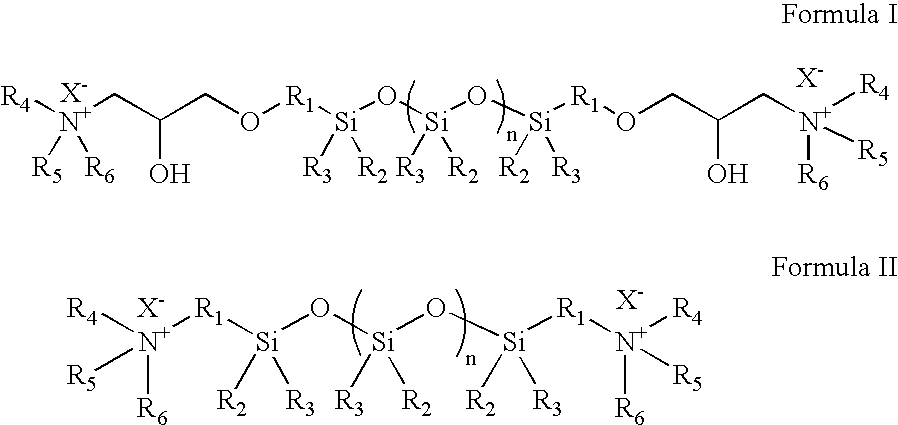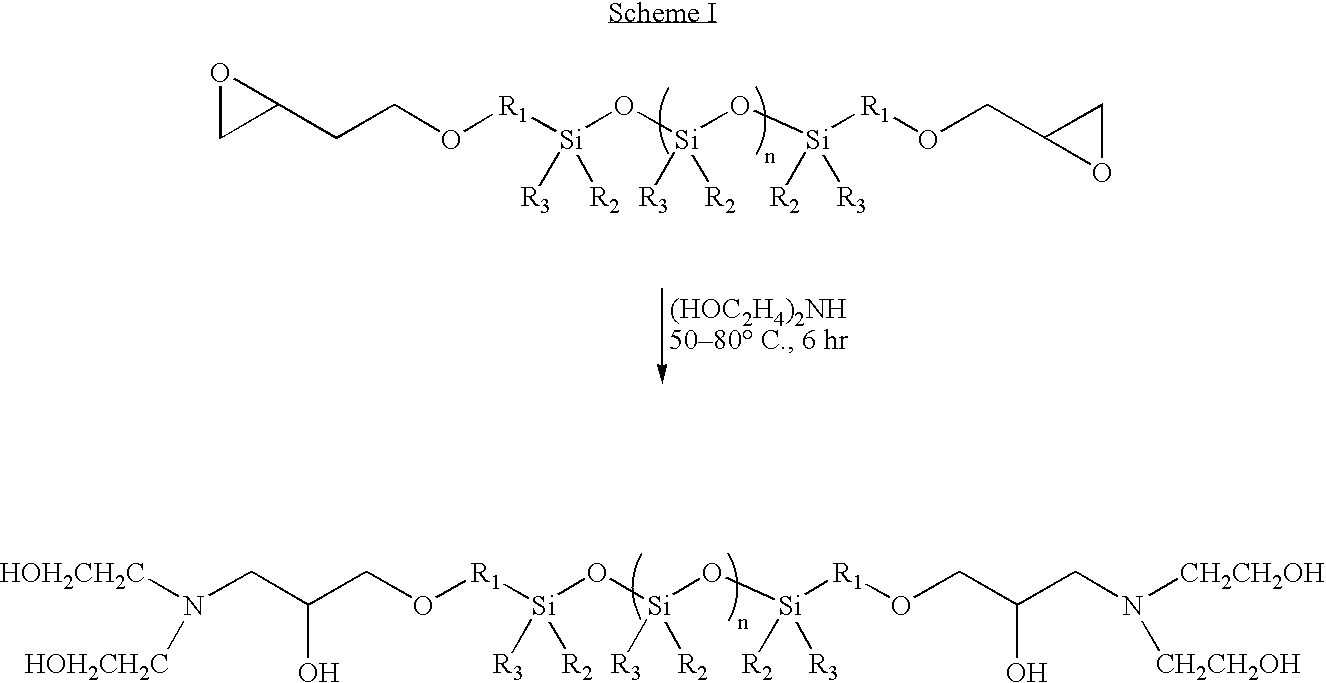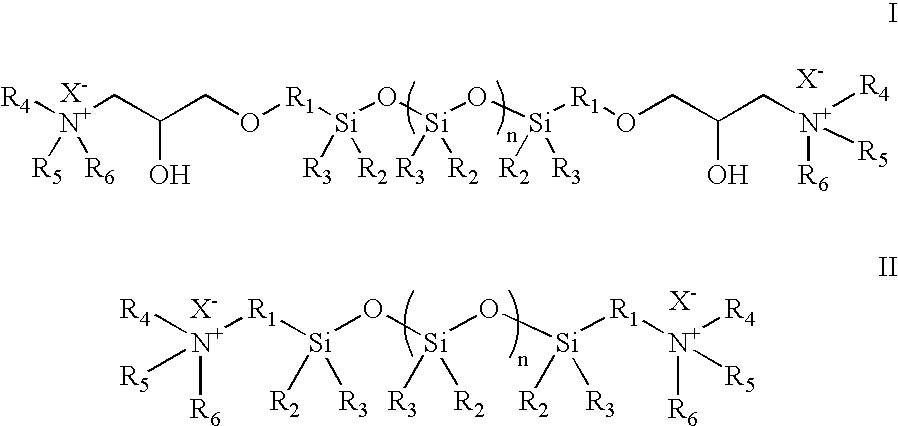Treatment composition for making acquisition fluff pulp in sheet form
a technology of fluff pulp and composition, which is applied in the direction of bandages, chemistry apparatus and processes, other chemical processes, etc., can solve the problems of cross-linked cellulosic fibers that have not been widely adopted in absorbent products, severe fiber breakage, and inability to absorb odor and discoloration, etc., to achieve low content, low cost, and low cost
- Summary
- Abstract
- Description
- Claims
- Application Information
AI Technical Summary
Benefits of technology
Problems solved by technology
Method used
Image
Examples
example 1
[0098] This example illustrates one method suitable for synthesizing the anti-hydrogen-bonding agent poly(dimethylsiloxane), diglycidyl ether terminated-diethanolamine PDMSDGE-DEA. Equi-equivalent quantities of diethanolamine (214.0 g, 2.04 equiv.) and poly(dimethylsiloxane), diglycidyl ether terminated (1.0 kg, 2.04 equiv.) were placed in round bottom flask (2.0 L) equipped with a magnet stir bar. The mixture was heated in a water bath (about 60° C.) for about 4 hours while stirring, after which a clear, thick liquid was obtained. The liquid was used as is in making treatment composition solution.
example 2
[0099] This example illustrates a representative method for making an acquisition fluff pulp in sheet form. In addition, the effect of using various amounts of anti-hydrogen-bonding agent PDMSDGE-DEA on the fiber quality and the performance of the acquisition fluff pulp was evaluated.
[0100] Treatment composition solutions (1.0 L) containing citric acid (3.75 wt %), sodium hypophosphite (1.33 wt %), and various concentrations of PDMSDGE-DEA (0.5-0.15 wt %), were prepared. The pH of the solutions were adjusted to about 2.9 to 3.2 with an aqueous solution of NaOH (about 8.0 g, 50 wt %). The treatment composition solutions then were used to treat hand sheets of Rayfloc®-J-LD cut from a jumbo roll mad at Jesup Mill. The treatment was carried out as follows: a hand sheet of Rayfloc®-J-LD (a 12 inch×12 inch sheet with a basis weight of about 680 gsm (g / m2), obtained from a jumbo roll was dipped in the solution of treatment composition prepared above, then pressed to achieve the desired le...
example 3
[0103] Example 2 was repeated, except in this example no adjustment was made to the pH (˜1.90) of the treatment composition solutions. Solutions with various concentrations of PDMSDGE-DEA were prepared and then used to treat hand sheets of Rayfloc®-J-LD as shown in Example 2. Fiber qualities and absorbent properties of the resultant acquisition fluff pulp are summarized in Tables 3 and 4.
TABLE 3Absorbent properties of acquisition fluff pulp made in accordancewith example 3 using Rayfloc ®-J-LD base fiberAbsorbentAbsorbencyCentrifugePDMSDGE-DEACapacityUnder LoadRetention(wt %)(g / g OD)(g / g OD)(g / g OD)0.05%11.39.50.570.10%11.29.20.530.15%11.29.30.52
[0104]
TABLE 4Fiber quality of commercial fibers and acquisitionfluff pulp made in accordance with example 2PDMSDGE-DEAKnots andFinesISO(wt %)nits (%)(%)BrightnessRayfloc ®-J-LD6.25.1(untreated)0.05%22.38.878.10.10%7.09.078.80.15%3.48.480.0
PUM
| Property | Measurement | Unit |
|---|---|---|
| Temperature | aaaaa | aaaaa |
| Temperature | aaaaa | aaaaa |
| Temperature | aaaaa | aaaaa |
Abstract
Description
Claims
Application Information
 Login to View More
Login to View More - R&D
- Intellectual Property
- Life Sciences
- Materials
- Tech Scout
- Unparalleled Data Quality
- Higher Quality Content
- 60% Fewer Hallucinations
Browse by: Latest US Patents, China's latest patents, Technical Efficacy Thesaurus, Application Domain, Technology Topic, Popular Technical Reports.
© 2025 PatSnap. All rights reserved.Legal|Privacy policy|Modern Slavery Act Transparency Statement|Sitemap|About US| Contact US: help@patsnap.com



